Navigation
Kiribati Creates World’s Largest Marine Protected Area
The small Pacific Island nation of Kiribati has become a global conservation leader by declaring the Phoenix Islands a protected area to ensure its biological diversity and sustainability.
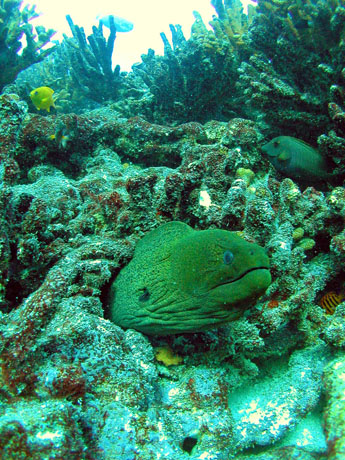 |
| A beautiful green moray eel emerges from reef in Phoenix Islands. Divers from the New England Aquarium in Boston found some of the most pristine coral reefs in the world there. Credit: David Obura |
The small Pacific Island nation of Kiribati has become a global conservation leader by declaring the Phoenix Islands a protected area to ensure its biological diversity and sustainability.
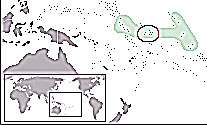 |
It is a California-sized ocean wilderness of pristine coral reefs and rich fish populations threatened by over-fishing and climate change.
The Phoenix Islands Protected Area (PIPA) conserves one of the Earth’s last intact oceanic coral archipelago ecosystems, consisting of eight coral atolls and two submerged reef systems in a nearly uninhabited region of abundant marine and bird life.
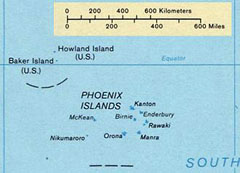 |
Located near the equator in the Central Pacific between Hawaii and Fiji, the Phoenix Islands form an archipelago several hundred miles long. They are part of the Republic of Kiribati, which comprises three distinct island groups (Gilbert Islands, Phoenix Islands and Line Islands) with a total of 33 islands to make it the largest atoll nation in the world.
The 410,500-square-kilometer (158,453-square-mile) protected area also includes underwater mountains and other deep-sea habitat.
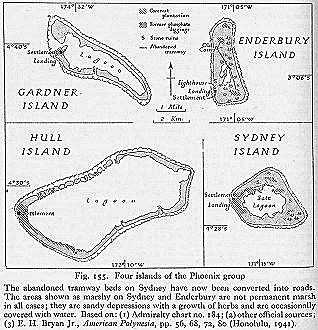 |
| The Phoenix Islands and surrounding areas are home to some 120 species of coral and more than 500 species of fish. On January 28, 2008, the government of Kiribati formally declared the entire Phoenix group and surrounding waters a protected area, making its 410,500 square kilometres the world's largest marine protected area. Credit: Wikipedia |
Kiribati first declared the creation of PIPA at the 2006 Conference of the Parties to the Convention on Biological Diversity in Brazil. On Jan. 30, 2008, Kiribati adopted formal regulations for PIPA that more than doubled the original size to make it the largest marine protected area on Earth.
The Voice of New Zealand, Broadcasting to the Pacific, Te Reo Irirangi O Aotearoa, O Te Moana-Nui-A-Kiwa, reported that Kiribati’s minister for environment, Tetapo Nakara, says the government wants to ensure a viable use of its resources. “Certain areas of the Phoenix Islands will be declared a marine protected area. In March, we’ll going to have the negotiation with the potential donors and after that we’ll determine the timeframe. The main reason for this is part of the government’s commitment to conserve the place and the biological diversity.”
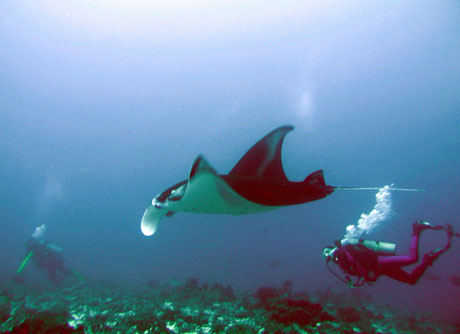 |
| A manta ray swims near two divers on a New England Aquarium scientific expedition to the Phoenix Islands. These gentle giants can reach a wing span of twenty feeet. Depsite their size, manta rays feed on tiny plankton. Credit: David Obura Location: Phoenix Islands, Nation of Kiribati Taken during the 2002 New England Aquarium Expedition |
Tetapo Nakara says it hopes to fully establish the area as a protected zone by the end of the year. The minister expects that the site will attract many tourists.
The Phoenix Islands Protected Area (PIPA) will consist of underwater mountains, coral reefs and more than 520 species of fish.
PIPA conserves one of the Earth’s last intact oceanic coral archipelago ecosystems, consisting of eight coral atolls and two submerged reef systems in a nearly uninhabited region of abundant marine and bird life.
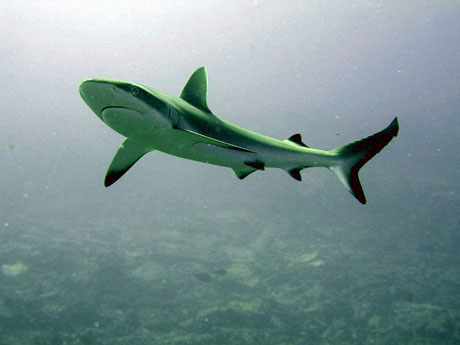 |
| The shallow, remote coral reef systems of the Phoenix Islands provide an ideal shark nursery ground. When New England Aquarium scientists first dove here, they were struck by the abundance and curiosity of the sharks. Unfortunately, subsequent expeditions saw fewer sharks as a result of illegal shark fishing. Credit: David Obura |
Kiribati first declared the creation of PIPA at the 2006 Conference of the Parties to the Convention on Biological Diversity in Brazil. On Jan. 30, 2008, Kiribati adopted formal regulations for PIPA that more than doubled the original size to make it the largest marine protected area on Earth.
Kiribati and the New England Aquarium (NEAq) developed PIPA over several years of joint scientific research, with funding and technical assistance from Conservation International’s (CI) Global Conservation Fund and Pacific Islands Program. The CI support for PIPA is part of the Coral Reef Initiative in the South Pacific (CRISP).
“Kiribati has taken an inspirational step in increasing the size of PIPA well beyond the original eight atolls and globally important seabird, fish and coral reef communities,” said Greg Stone, the NEAq vice-president of global marine programs. “The new boundary includes extensive seamount and deep sea habitat, tuna spawning grounds, and as yet unsurveyed submerged reef systems.”
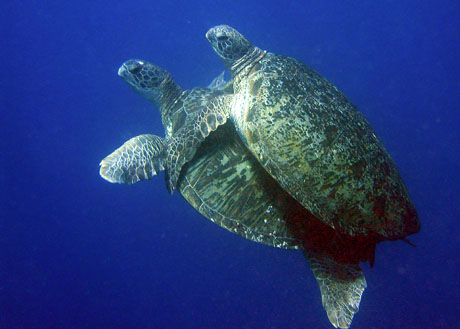 |
| Two green sea turtles are celebrating nature’s version of Valentine’s Day! Sea turtle populations in the Pacific are in dramatic decline due to by-catch in much commercial fishing activity. The new Phoenix Islands Protected Area will provide an important habitat reserve for these turtles which can weigh several hundred pounds as adults. Credit: David Obura Taken in Phoenix Islands |
“The creation of this amazing marine protected area by a small island nation in the Pacific represents a commitment of historic proportions; and all of this by a country that is under serious threat from sea-level rise attributed to global warming,” said CI President Russell A. Mittermeier.
Three NEAq-led research expeditions since 2000 found great marine biodiversity, including more than 120 species of coral and 520 species of fish, some new to science. Some of the most important seabird nesting populations in the Pacific, as well as healthy fish populations and the presence of sea turtles and other species, demonstrated the pristine nature of the area and its importance as a migration route.
Protecting the Phoenix Islands means restricting commercial fishing in the area, resulting in a loss of revenue that the Kiribati government would normally receive from issuing foreign commercial fishing licenses. NEAq and CI are helping Kiribati design an endowment system that will cover the core recurring management costs of PIPA and compensate the government for the foregone commercial fishing license revenues. The plan allows for subsistence fishing by resident communities and other sustainable economic development in designated zones of the protected area.
Keeping oceans and marine ecosystems intact and healthy allows them to better resist the impacts of climate change and continue their natural role of sequestering atmospheric carbon that causes global warming.
Notes:
Visit the Phoenix Islands Web site.
The Phoenix Islands were featured in a major article in National Geographic in February 2004
Contacts:
Republic of Kiribati
Tebwe Ietaake
+ 686-28630
tebwe@melad.gov.ki
New England Aquarium
Tony LaCasse
+1-617-877-6871
Conservation International
Sue Miller Taei, Samoa
+685-21593
Tom Cohen
+1-703-341-2729
NOTE: Visit Horizon International's Magic Porthole coral reef Web site at www.magicporthole.org
Related coverage on the Horizon Solutions Site:
Coralpedia Established to Identify Corals, Soft Corals and Sponges of the Caribbean
Coral Reef Playing Cards Capture Nationwide Audiences
Possible Moonlight Trigger Found for Annual Mass Spawning of Corals
Fishing Ban Protects Largest Coral Reef in The Philippines, Apo Reef
New Security for Coral Reefs: Red and Pink Corals Get United Nations Trade Protection
Magic Porthole Coral Reef Preview Offers Videos,Games, Resources
Search
Latest articles
Agriculture
- World Water Week: Healthy ecosystems essential to human health: from coronavirus to malnutrition Online session Wednesday 24 August 17:00-18:20
- World Water Week: Healthy ecosystems essential to human health: from coronavirus to malnutrition Online session Wednesday 24 August 17:00-18:20
Air Pollution
- "Water and Sanitation-Related Diseases and the Changing Environment: Challenges, Interventions, and Preventive Measures" Volume 2 Is Now Available
- Global Innovation Exchange Co-Created by Horizon International, USAID, Bill and Melinda Gates Foundation and Others
Biodiversity
- It is time for international mobilization against climate change
- World Water Week: Healthy ecosystems essential to human health: from coronavirus to malnutrition Online session Wednesday 24 August 17:00-18:20
Desertification
- World Water Week: Healthy ecosystems essential to human health: from coronavirus to malnutrition Online session Wednesday 24 August 17:00-18:20
- UN Food Systems Summit Receives Over 1,200 Ideas to Help Meet Sustainable Development Goals
Endangered Species
- Mangrove Action Project Collaborates to Restore and Preserve Mangrove Ecosystems
- Coral Research in Palau offers a “Glimmer of Hope”
Energy
- Global Innovation Exchange Co-Created by Horizon International, USAID, Bill and Melinda Gates Foundation and Others
- Wildlife Preservation in Southeast Nova Scotia
Exhibits
- Global Innovation Exchange Co-Created by Horizon International, USAID, Bill and Melinda Gates Foundation and Others
- Coral Reefs
Forests
- NASA Satellites Reveal Major Shifts in Global Freshwater Updated June 2020
- Global Innovation Exchange Co-Created by Horizon International, USAID, Bill and Melinda Gates Foundation and Others
Global Climate Change
- It is time for international mobilization against climate change
- It is time for international mobilization against climate change
Global Health
- World Water Week: Healthy ecosystems essential to human health: from coronavirus to malnutrition Online session Wednesday 24 August 17:00-18:20
- More than 400 schoolgirls, family and teachers rescued from Afghanistan by small coalition
Industry
- "Water and Sanitation-Related Diseases and the Changing Environment: Challenges, Interventions, and Preventive Measures" Volume 2 Is Now Available
- Global Innovation Exchange Co-Created by Horizon International, USAID, Bill and Melinda Gates Foundation and Others
Natural Disaster Relief
- STOP ATTACKS ON HEALTH CARE IN UKRAINE
- Global Innovation Exchange Co-Created by Horizon International, USAID, Bill and Melinda Gates Foundation and Others
News and Special Reports
- World Water Week: Healthy ecosystems essential to human health: from coronavirus to malnutrition Online session Wednesday 24 August 17:00-18:20
- STOP ATTACKS ON HEALTH CARE IN UKRAINE
Oceans, Coral Reefs
- World Water Week: Healthy ecosystems essential to human health: from coronavirus to malnutrition Online session Wednesday 24 August 17:00-18:20
- Mangrove Action Project Collaborates to Restore and Preserve Mangrove Ecosystems
Pollution
- Zakaria Ouedraogo of Burkina Faso Produces Film “Nzoue Fiyen: Water Not Drinkable”
- "Water and Sanitation-Related Diseases and the Changing Environment: Challenges, Interventions, and Preventive Measures" Volume 2 Is Now Available
Population
- "Water and Sanitation-Related Diseases and the Changing Environment: Challenges, Interventions, and Preventive Measures" Volume 2 Is Now Available
- "Water and Sanitation-Related Diseases and the Changing Environment: Challenges, Interventions, and Preventive Measures" Volume 2 Is Now Available
Public Health
- Honouring the visionary behind India’s sanitation revolution
- Honouring the visionary behind India’s sanitation revolution
Rivers
- World Water Week: Healthy ecosystems essential to human health: from coronavirus to malnutrition Online session Wednesday 24 August 17:00-18:20
- Mangrove Action Project Collaborates to Restore and Preserve Mangrove Ecosystems
Sanitation
- Honouring the visionary behind India’s sanitation revolution
- Honouring the visionary behind India’s sanitation revolution
Toxic Chemicals
- "Water and Sanitation-Related Diseases and the Changing Environment: Challenges, Interventions, and Preventive Measures" Volume 2 Is Now Available
- Actions to Prevent Polluted Drinking Water in the United States
Transportation
- "Water and Sanitation-Related Diseases and the Changing Environment: Challenges, Interventions, and Preventive Measures" Volume 2 Is Now Available
- Urbanization Provides Opportunities for Transition to a Green Economy, Says New Report
Waste Management
- Honouring the visionary behind India’s sanitation revolution
- Honouring the visionary behind India’s sanitation revolution
Water
- Honouring the visionary behind India’s sanitation revolution
- Honouring the visionary behind India’s sanitation revolution
Water and Sanitation
- Honouring the visionary behind India’s sanitation revolution
- Honouring the visionary behind India’s sanitation revolution

